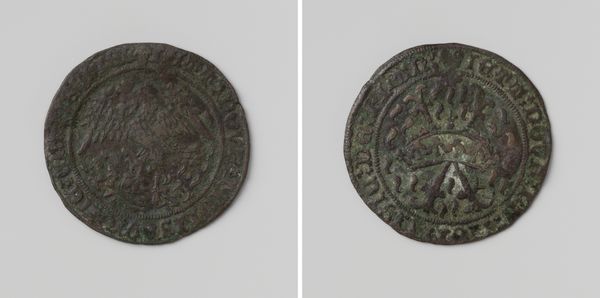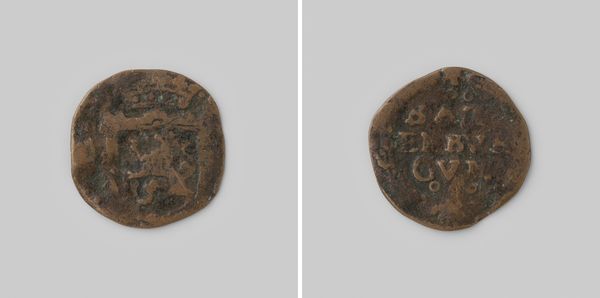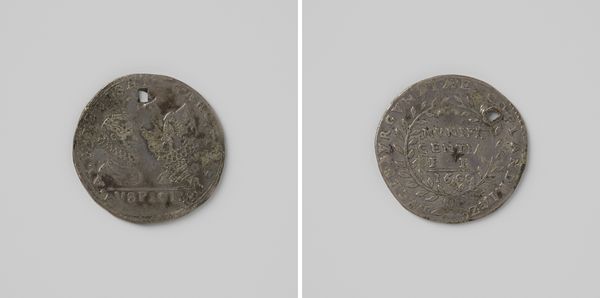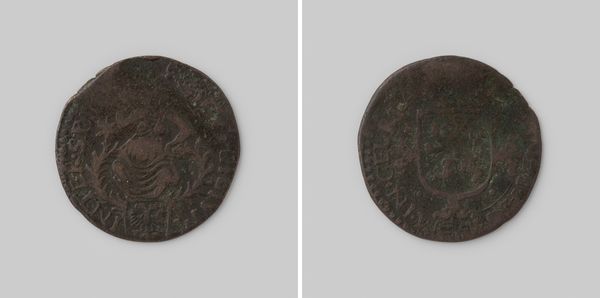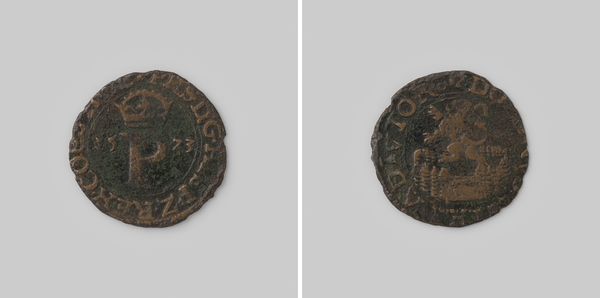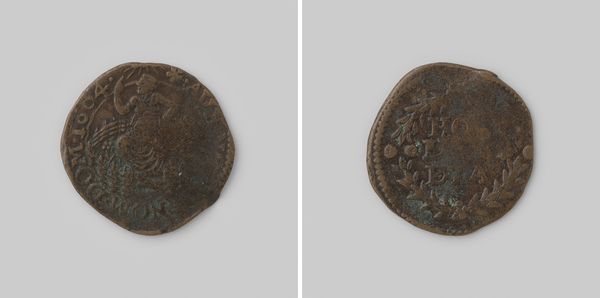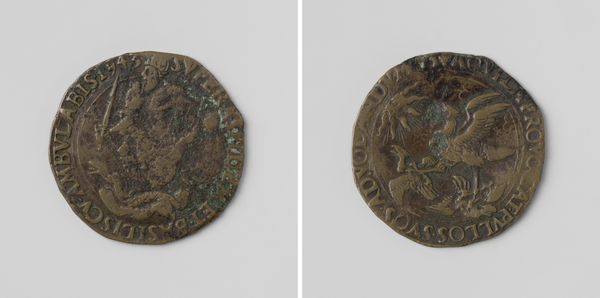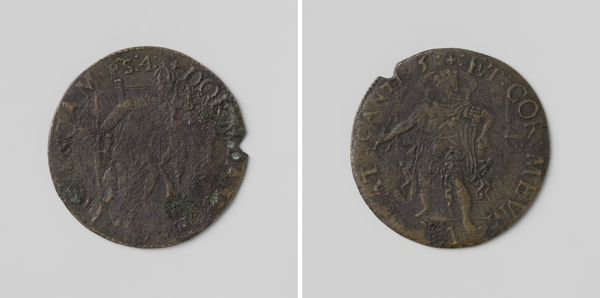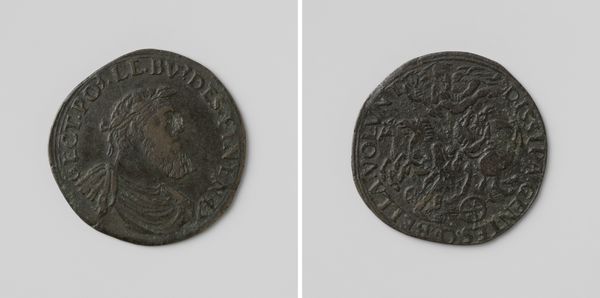
print, metal
# print
#
metal
#
ancient-mediterranean
Dimensions: diameter 2 cm, weight 2.10 gr
Copyright: Rijks Museum: Open Domain
Editor: Here we have a metal print dated 1518 depicting Johanna van Castilie and Karel I, King of Spain. It’s quite small and very worn, giving it a tactile sense of history. How do you approach interpreting a piece like this from a formal perspective? Curator: The key lies in the intricate structuring of visual elements. Note the circular form, a self-contained cosmos echoing its function as currency. How does this bounded form affect our perception? Editor: It makes me feel like I'm looking at something complete, a contained unit. Curator: Precisely. Now, observe the concentric bands of inscription and figuration. The interplay of these lines and textures creates a visual rhythm, doesn't it? Consider how the raised relief and patinated surface emphasize light and shadow, adding depth to a two-dimensional object. Can you discern any shapes emerging? Editor: I see what looks like a cross, but much of it is worn away. Is there some tension created by this absence and the partial visibility of the shapes? Curator: Yes. The visual field isn't uniform but composed through a dialectic of presence and absence. Think of it as a play on semiotics – how signs operate based on the very possibility of absence. Editor: I see. So, it’s not just about what's visible but also how the formal arrangement conveys meaning through what is obscured or suggested. Thank you for explaining; it gives me a lot to think about in considering the relation between material and historical symbolism. Curator: Indeed, it is a system of signs reflecting material scarcity itself. A productive exercise in decoding art through its inherent qualities and language.
Comments
No comments
Be the first to comment and join the conversation on the ultimate creative platform.
